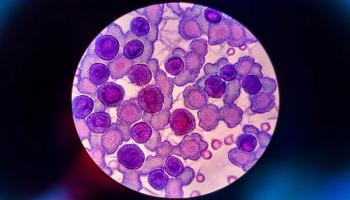
- February 2012 Infectious Disease
- Volume 78
- Issue 2
Cold Watch
Chronic Wet Cough in Children Frequently Bacterial
Protracted bacterial bronchitis, the presence of more than 4 weeks of chronic wet cough that resolves with appropriate antibiotic therapy, is a controversial diagnosis in the pediatric community. Now, though, there may be reason to believe this diagnosis may be correct more commonly than previously thought.
In an article published online on January 9, 2012, in the journal Pediatrics, researchers analyzed 197 charts and bronchoscopy reports of children who presented with chronic wet cough unresponsive to therapy before referral to the pediatric pulmonary clinic. Of 109 children who were 0 to 3 years of age, bronchoalveolar lavage bacterial cultures were positive in 46% of the children and showed the presence of a variety of bacteria, including Hemophilus influenzae, Streptococcus pneumoniae, Moraxella catarrhalis, Staphylococcus aureus, and even Klebsiella pneumoniae in 1 patient.
The study shows that latent bacterial lower airway infections in patients who present with chronic wet cough are a frequent observation in young children, and they may benefit from appropriate antibiotic therapy. PT
Sore Throat Not Always Predictive of Streptococcal Pharyngitis
Although a common complaint among young children with colds, a sore throat is not the best predictor of a true infection, according to a systematic review published online November 3, 2011, in The Journal of Pediatrics.
The investigators searched medical databases for cases of sore throat in children 3 to 18 years that included information pertaining to the accuracy of the signs of streptococcal pharyngitis. Of the studies included in their systemic review, 38 included information on individual signs and symptoms, whereas 15 contained discussions of symptoms within clinical prediction rules.
Lead author Nader Shaikh, MD, MPH, of the Children’s Hospital of Pittsburgh, and colleagues found that in children with a sore throat, symptoms such as scarlatiniform rash (likelihood ratio [LR], 3.91; 95% CI, 2.00-7.62), palatal petechiae (LR, 2.69; CI, 1.92- 3.77), pharyngeal exudates (LR, 1.85; CI, 1.58-2.16), vomiting (LR, 1.79; CI, 1.58-2.16), and tender cervical nodes (LR, 1.72; CI, 1.54- 1.93) were useful but not definitively predictive when attempting to identify streptococcal pharyngitis.
Dr. Shaikh and colleagues estimate that between 6% and 8% of children’s visits to pediatricians and other primary care providers are as a result of sore throat. They note that streptococcal pharyngitis should be accurately diagnosed to avoid serious complications, but their findings suggest that antibiotics could be overprescribed if clinicians base their treatment on presenting symptoms alone. The rapid test available for the detection of Group A Streptococcus is a better tool for diagnosis, but may not be necessary in all cases.
“In children with a sore throat, testing is probably prudent. In children with a simple cold, with signs or symptoms suggestive of strep throat, testing should not be performed,” Dr. Shaikh concluded.
Intermittent Use of Budesonide May Be Just as Effective as Daily Use
Daily inhaled budesonide, a mainstay of asthma therapy in young children, may not be superior to intermittent use, according to a new study.
In an article published in the New England Journal of Medicine on November 24, 2011, researchers from the National Heart, Lung, and Blood Institute studied the use of inhaled budesonide in children between the ages of 12 and 53 months who had recurrent wheezing episodes and at least 1 asthma exacerbation. They randomly assigned the children to receive a budesonide inhalation suspension for 1 year as either an intermittent high-dose regimen (1 mg twice daily for 7 days, starting early during a predefined respiratory tract illness) or a daily low-dose regimen (0.5 mg nightly) with corresponding placebos.
The primary outcome was frequency of exacerbations requiring oral glucocorticoids. The researchers found that the daily regimen of budesonide did not differ significantly from the intermittent regimen with respect to the frequency of exacerbations.
These results are significant because, as the authors emphasize, they demonstrate that young children can achieve the same results in asthma therapy with significantly less steroid exposure. In addition to no significant difference in the primary outcome, there were also no significant between-group differences in several other measures of asthma severity, including the time to the first exacerbation, or adverse events.
Articles in this issue
almost 14 years ago
New Drugs of 2011, Part 2almost 14 years ago
Personalized Medicine Brings Pharmacy Science Back to the Futurealmost 14 years ago
Health Care Reform...Disruptive Changes?almost 14 years ago
A Decade of "Smart" Infusion Pumpsalmost 14 years ago
Overactive Bladder Management: Challenges and Opportunitiesalmost 14 years ago
Infectious Diseases Watchalmost 14 years ago
Diabetes Watchalmost 14 years ago
Tech Product Newsalmost 14 years ago
Technology Newsalmost 14 years ago
The Evolution of Specialty PharmacyNewsletter
Stay informed on drug updates, treatment guidelines, and pharmacy practice trends—subscribe to Pharmacy Times for weekly clinical insights.


















































































































































































































